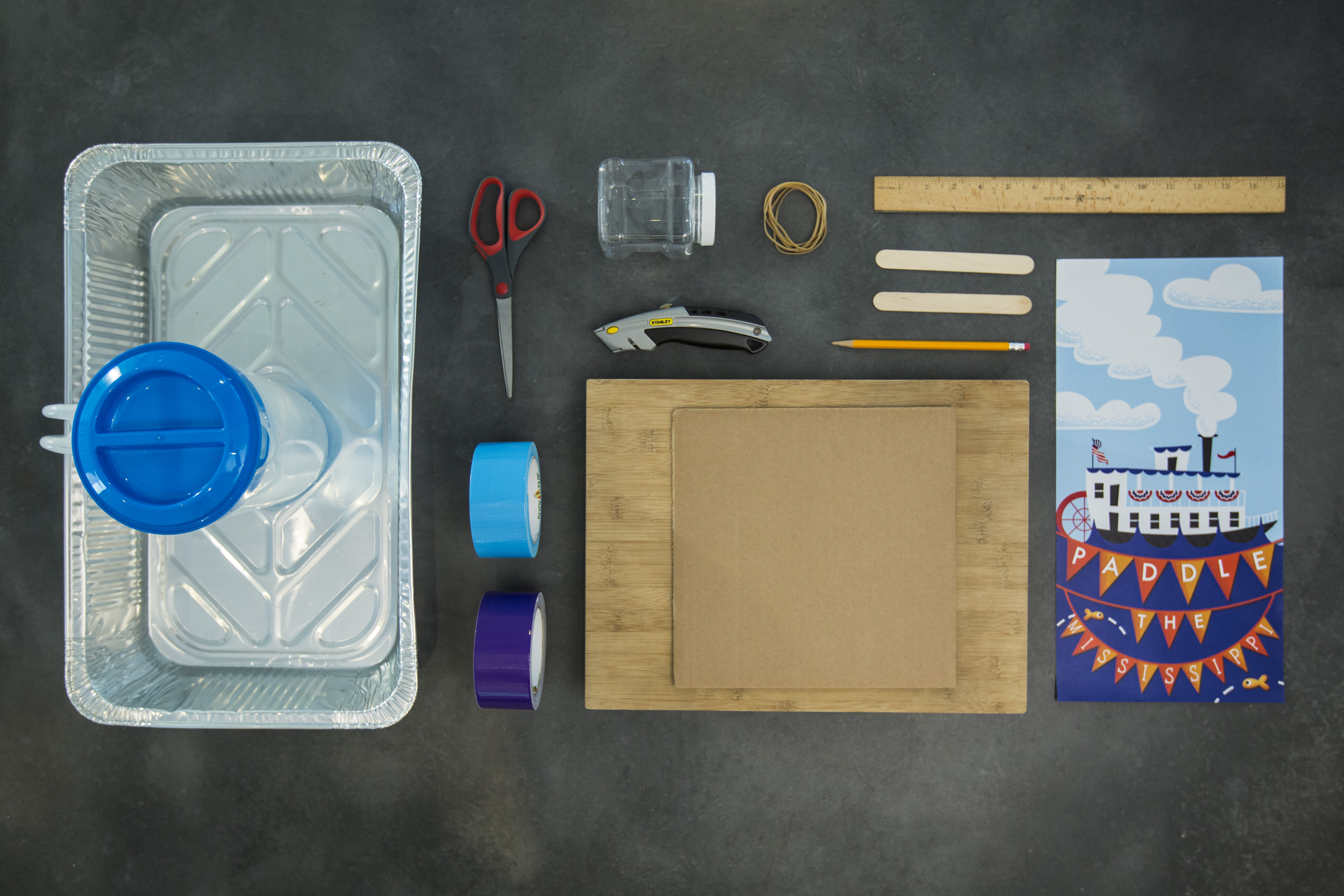Paddle Boat
Build your own boat that uses kinetic energy stored in rubber bands to move.
Materials
- Cardboard
- Rubber bands
- Ruler
- Scissors
- Duct tape
- Clear tape
- Craft sticks or straws
- A sink, tub or large container filled with water
Directions
- Cut the cardboard into pieces of these dimensions: one piece that is 5 inches by 10 inches, and two pieces that are 1.5 inches by 2.5 inches each.
- Take the large piece of cardboard, which will be the body of the boat. Towards one end, cut a rectangular window that measures 3 by 4 inches and is 1 inch from the edges. This is the back of the boat. On the front of the boat, cut two angles so that the front is pointed.
- Cover the entire body of the boat with duct tape. This will help make it waterproof. The better you cover everything, especially the tricky inside corners, the longer your boat will last.
- On the smaller pieces of cardboard, cut a slit in the center of the long edge that goes halfway through. Do the same with the other piece. Fit the two slits together so the cardboard makes an X or "plus" shape. This is your paddle wheel. Cover the X shape with duct tape.
- To attach the paddle wheel to the boat body, stretch two rubber bands across the center of the boat's back window. Place the paddle between the rubber bands, with one on each side of the X.
- Wind up the boat by turning the paddle backwards. Hold on to the paddle as you place the boat in water, then let it go!
Having a hard time visualizing these directions? Check out this document for some additional visual instructions.
What's happening?
When you wind up the paddle, the rubber band stores energy. This is potential energy, which occurs because the twisted rubber band is not in equilibrium—you have to hold it in place or it will unwind. When you let go of the paddle, the rubber bands unwind to rotate the paddle and push the boat forward. That unwinding is the conversion of potential energy to kinetic energy, which is the energy of motion. The rubber band moving the paddle and the paddle pushing on the water and the boat moving forward are all examples of kinetic energy.
Extensions
Change your boat design to see if you can make it move faster or travel farther. Use a lightweight plastic container, tape two craft sticks or straws on either side and attach the rubber bands and paddle to the end of the craft sticks. Try other materials that float and don’t get soggy in water, such as wood or Styrofoam. Decorate your boat, and see if you can give a toy figure a ride!
Recommended reading
Things That Float and Things That Don't by David Adler, illustrated by Anna Raff
Boats Float! by George Ella Lyon
